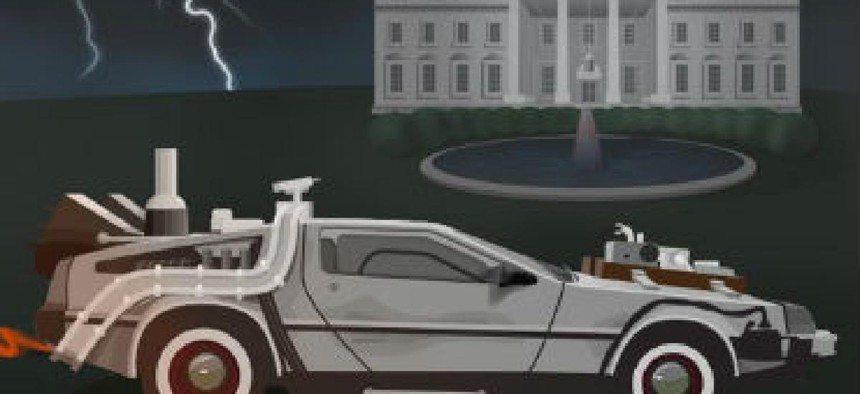Where we're going, we still need roads

White House celebrates "Back to the Future" day, innovation.

The OSTP took advantage of a landmark piece of movie trivia to nerd out online.
Great Scott! The landmark day from the film "Back to the Future Part II" is here at last.
In the year 1985, "Back to the Future" protagonists Marty McFly and Doc Brown traveled to a very specific day in the future -- Oct. 21, 2015. On the actual date, the White House joined in the fun, using the opportunity to look at how far technology has come in the last 30 years, and what we can expect to see in the next 30.
Technology experts with the White House's Office of Science and Technology Policy nerded out for what is being celebrated on social media as #Back to the Future Day, hosting a series of conversations about the future with scientists and innovators across the world, inviting participation on social media.
Film co-writers Robert Zemeckis and Bob Gale were right about card readers and flat-screen TVs, it turns out. The use of biometrics is growing. The 3D hologram of a shark from "Jaws 19" foreshadowed 3D technology (and the steady stream of movie franchise sequels) that we've come to expect today. Hoverboards and dehydrated pizza, on the other hand...
Amusement aside, though, OSTP Deputy Director for Technology and Innovation Tom Kalil explained why the White House is paying attention.
"Actually, there's a really serious reason to do that," Kalil said. "If you look at the history of scientific and technological development, a lot of times scientists, engineers, and entrepreneurs are inspired by the science fiction movies and TV shows they watch."
We don't have Doc Brown's flux capacitor, but we do have Einstein's theory of relativity, which tells us traveling into the future is possible if we can manage to travel close to the speed of light.
"It can happen if you travel very fast. Einstein tells us our clocks slow down," said Professor Tim Ralph of the University of Queensland in Brisbane, Australia.
"Future" star Michael J. Fox, meanwhile, is looking towards a future where Parkinson's Disease is a thing of the past. The White House published a message from Fox. "So what's possible in another 30 years? Call me an optimist, but I believe that by 2045 we'll find the cures we seek," the actor said.
The White House also hosted a conversation with neuroscience experts and Kevin Pearce, a snowboarder who suffered a traumatic brain injury six years ago while training for the Olympics, about the future of brain research. Karl Deisseroth, the D.H. Professor of Bioengineering and of Psychiatry and Behavioral Sciences at Stanford University, is hopeful that by the year 2045 researchers will understand the brain the same way they understand the heart, and will have similar cures for neurological illnesses.
The message from the White House, in short, was that the "Back to the Future" movies teach us that while we can't always forecast what will happen in 30 years, dedicated scientists can work to create a better future.





